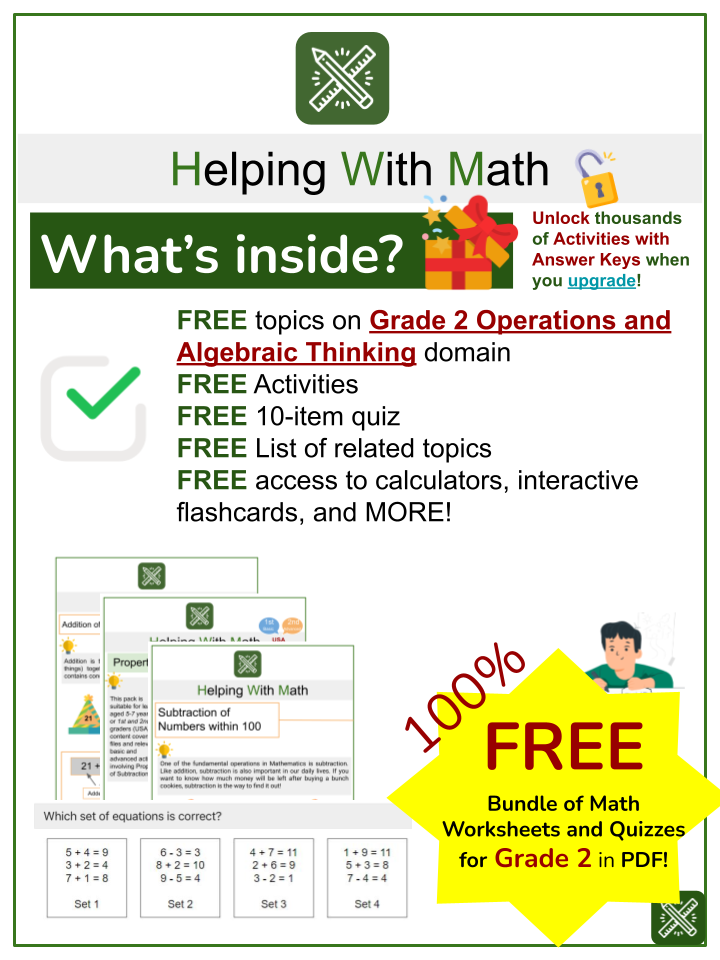Download Grade 2 Operations and Algebraic Thinking Free Bundle
Click the button below to get instant access to this FREE bundle of worksheets and quiz items for use in the classroom or at home.

Download free sample
Not ready to purchase a subscription yet? Click here to download a FREE sample of this worksheet pack.
This bundle is FREE for premium and basic subscribers. Upgrade anytime to access the entire activities with answer keys!
Download free sample
Not ready to purchase a subscription yet? Click here to download a FREE sample of this worksheet pack.
What’s inside?
- FREE topics on Grade 2 Operations and Algebraic Thinking domain
- FREE Activities
- FREE 10-item quiz
- FREE List of related topics
- FREE access to calculators, interactive flashcards, and MORE!
This fantastic bundle includes FREE worksheets and quiz items about Operations and Algebraic Thinking. These ready-to-use Common Core-aligned, Grade 2 Math worksheets, are perfectly paired with premium End-of-Year test booklets.
Common Core Standards (2.OA)
Represent and solve problems involving addition and subtraction.
- Use addition and subtraction within 100 to solve one- and two-step word problems involving situations of adding to, taking from, putting together, taking apart, and comparing, with unknowns in all positions, e.g., by using drawings and equations with a symbol for the unknown number to represent the problem.
Add and subtract within 20.
- Fluently add and subtract within 20 using mental strategies. By end of Grade 2, know from memory all sums of two one-digit numbers.
Work with equal groups of objects to gain foundations for multiplication.
- Determine whether a group of objects (up to 20) has an odd or even number of members, e.g., by pairing objects or counting them by 2s; write an equation to express an even number as a sum of two equal addends.
- Use addition to find the total number of objects arranged in rectangular arrays with up to 5 rows and up to 5 columns; write an equation to express the total as a sum of equal addends.
Resource Examples
Click any of the example images below to view a larger version.













